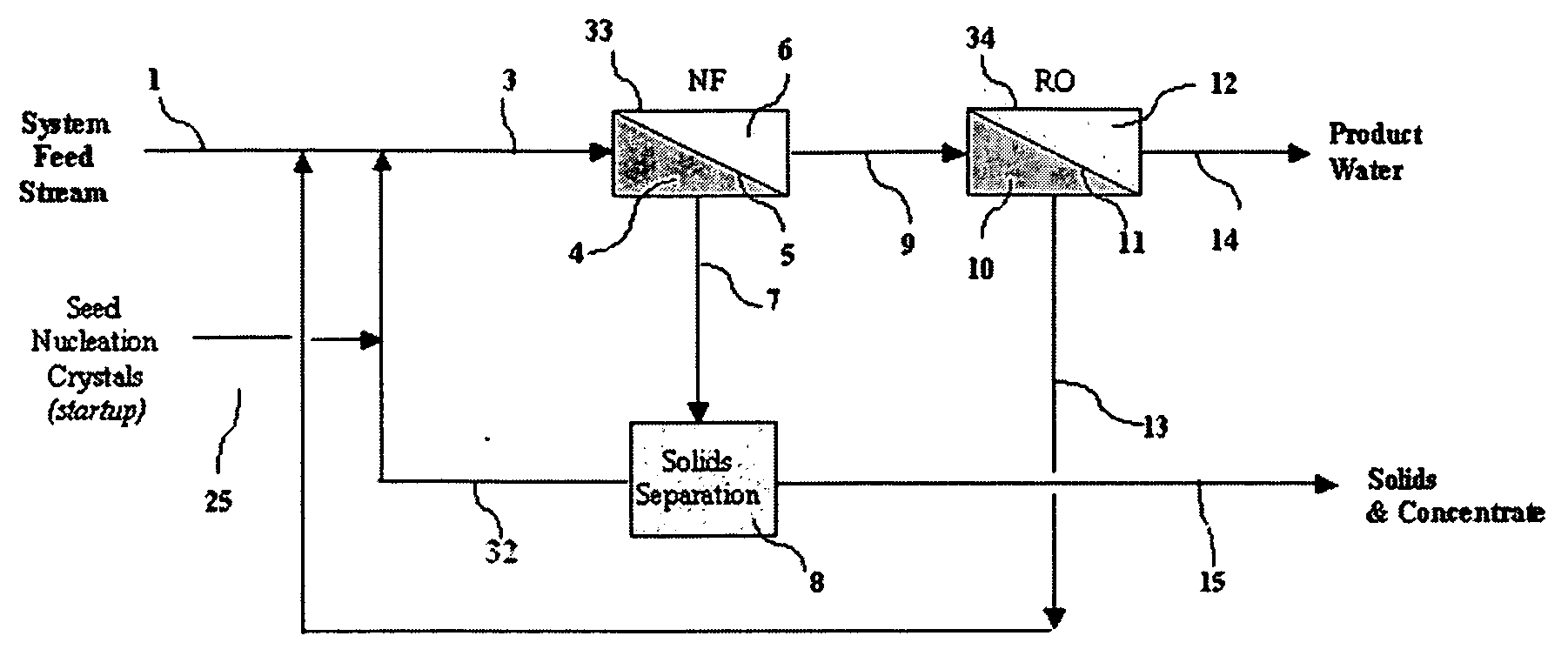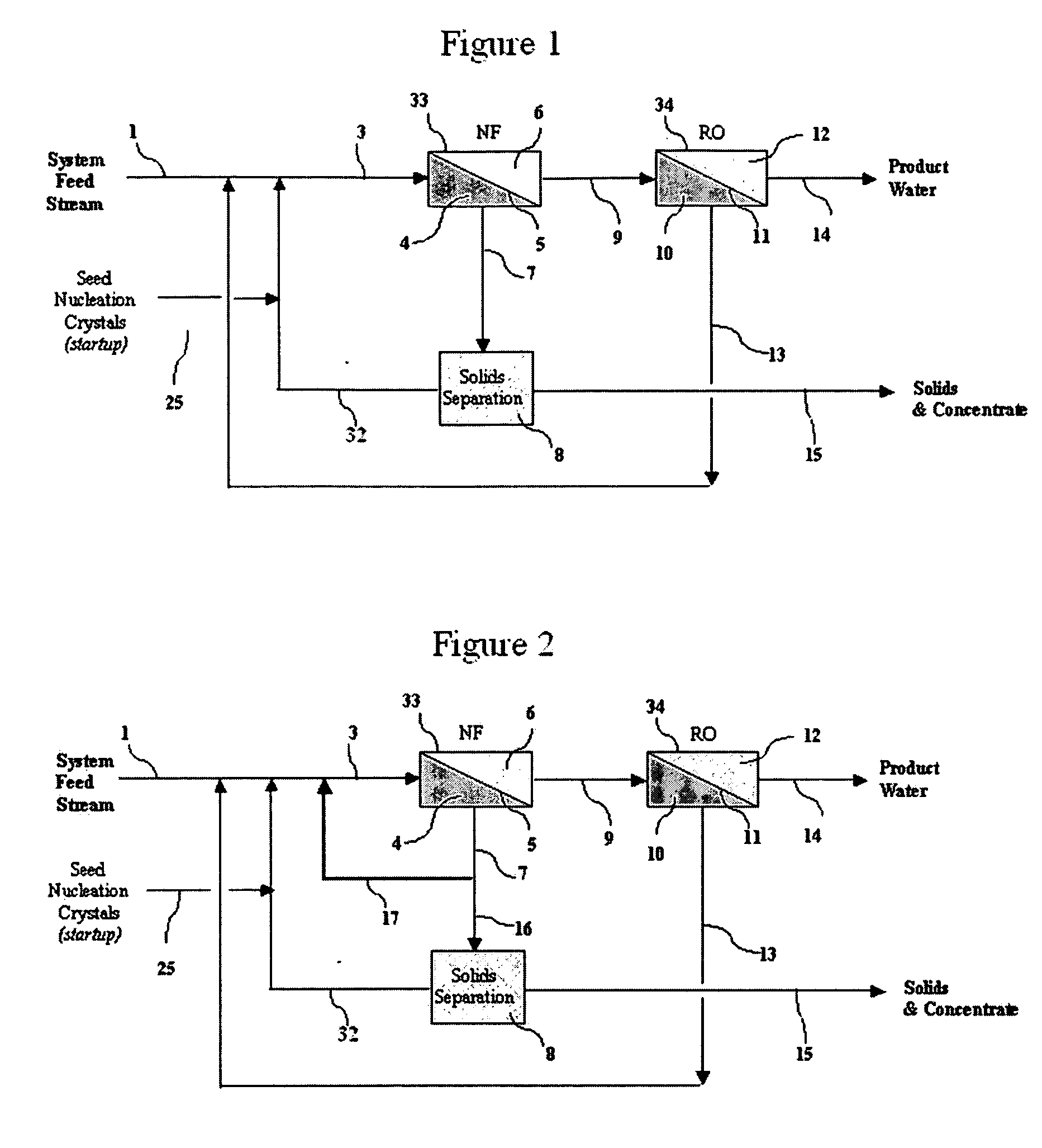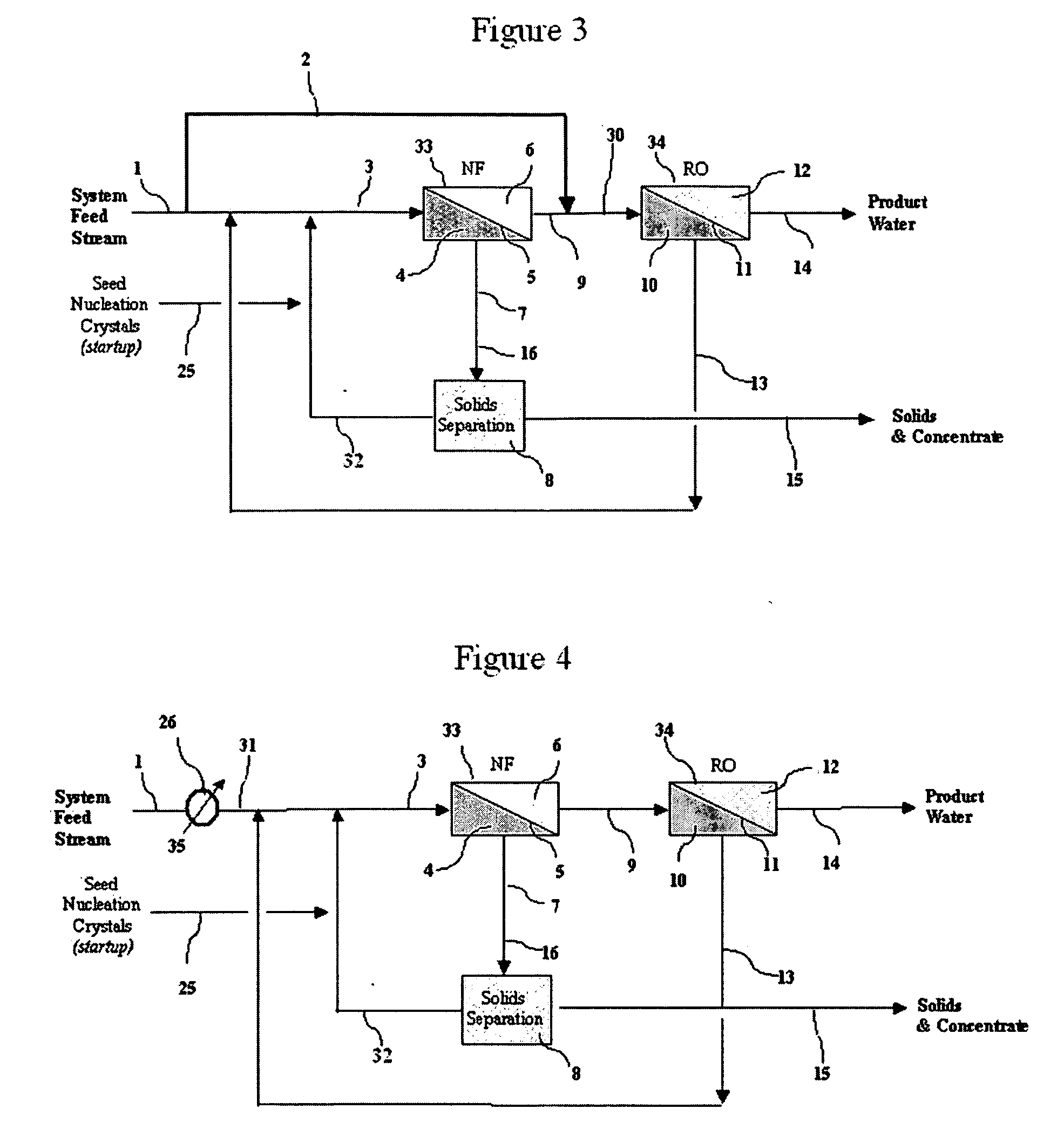Preferential precipitation membrane system and method
a precipitation membrane and precipitation technology, applied in the field of water treatment, can solve the problems of inefficiency of operation at reduced recovery rate, inability to control the precipitation of mineral compounds (scale) on the membrane surface, and limited purity of the feed stream, so as to achieve high recovery rate, high saline feed water recovery rate, and high tds rejection rate
- Summary
- Abstract
- Description
- Claims
- Application Information
AI Technical Summary
Benefits of technology
Problems solved by technology
Method used
Image
Examples
Embodiment Construction
[0016] One embodiment of the present invention in which two membrane separation units are connected is shown in FIG. 1. In FIG. 1, first-pass membrane separation unit 33 is designated as a nanofiltration (NF) membrane, and second-pass membrane separation unit 34 is designated as a reverse osmosis (RO) unit. The use of these terms is not restrictive. The precise type of membrane used in each pass may vary depending on the application and desired performance of the system. For example, the first-pass membrane separation unit may be a multiple stage semi-permeable membrane barrier device.
[0017] In this embodiment, liquid feed stream 1 to be purified, e.g., hard water containing silica, calcium carbonate, calcium sulfate and suspended solids or wastewater or groundwater containing the same, is combined (i) with majority fraction stream 32 from the solids separation unit 8 containing a controlled amount of the nucleation crystals being returned to the process and (ii) with the retentate...
PUM
| Property | Measurement | Unit |
|---|---|---|
| temperature | aaaaa | aaaaa |
| temperature | aaaaa | aaaaa |
| pH | aaaaa | aaaaa |
Abstract
Description
Claims
Application Information
 Login to View More
Login to View More - R&D
- Intellectual Property
- Life Sciences
- Materials
- Tech Scout
- Unparalleled Data Quality
- Higher Quality Content
- 60% Fewer Hallucinations
Browse by: Latest US Patents, China's latest patents, Technical Efficacy Thesaurus, Application Domain, Technology Topic, Popular Technical Reports.
© 2025 PatSnap. All rights reserved.Legal|Privacy policy|Modern Slavery Act Transparency Statement|Sitemap|About US| Contact US: help@patsnap.com



